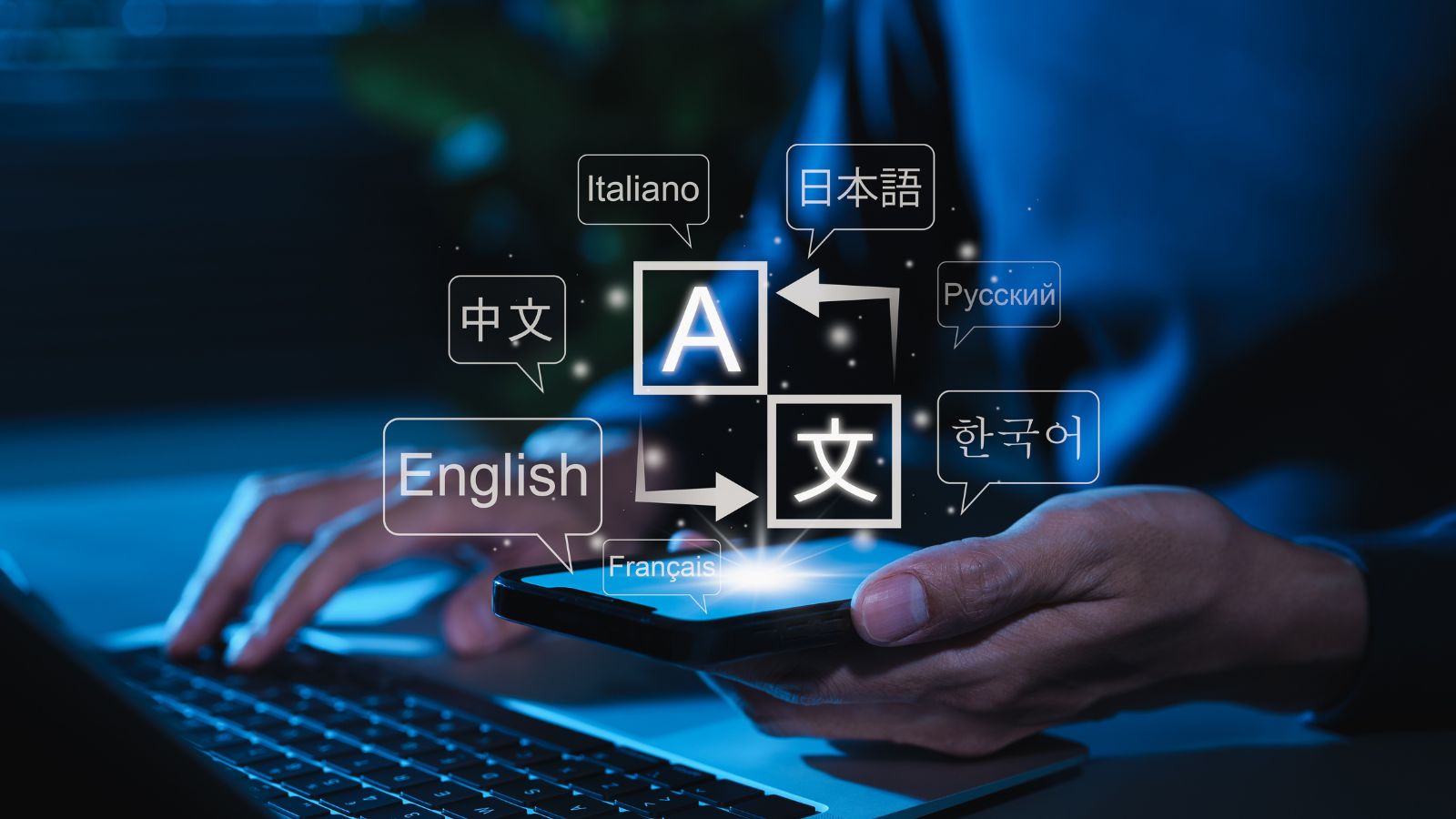- Article
The State of Data Annotation: Who Needs It, How It’s Used, and Why Multilingualism Matters
Behind every smart AI system lies an enormous amount of teaching. Before it can spot patterns or make predictions, someone has to show it what to look for by providing thousands, or even millions, of examples. Those examples only become training material once they’re labeled and structured, a step called data annotation.

Think about self-driving cars: every stop sign, traffic light, and pedestrian in training images has to be labeled so the system can learn what to pay attention to on the road. Without that step, the AI wouldn’t know the difference between a crosswalk and a lamp post, and that gap in understanding could affect how safely the car performs.
As adoption accelerates across sectors, demand for annotated data has surged. Every new application, whether in healthcare, finance, or retail, depends on carefully prepared datasets that teach systems how to interpret the world. The result is a growing need for high-quality labels at scale.
Why the Need for Annotated Data Is Rising
AI adoption is rising fast across industries, and the demand for high-quality training data is rising with it. The data annotation services market was valued at $1.89 billion in 2023 and is projected to reach $10.07 billion by 2031, growing at a compound annual rate of 23%. Software platforms for annotation are expanding too, expected to grow from $1.9 billion in 2024 to $6.2 billion by 2030.

Growth is being fueled by several forces: the sheer volume of data AI requires, the variety of formats now being annotated, and the spread of AI into new industries. Image annotation leads the market in areas such as autonomous driving, retail, healthcare, and security. Video annotation is growing quickly as well, projected to expand at about 26% annually.
But volume alone doesn’t guarantee success. Companies run into problems with scalability, consistency, cost, and quality, and these issues become even more complex in multilingual settings.
A label that works in English may not capture the right nuance in Spanish or Japanese. Certain scripts, such as Chinese or Thai, don’t use spaces between words, which makes segmentation and annotation more difficult. Other languages, like Mandarin or Vietnamese, are tonal, so the same syllable can carry entirely different meanings depending on pitch. Without careful handling, datasets risk introducing errors or bias, which results from one language or cultural perspective being overrepresented, which limits how well AI performs outside its original market.
How Data Annotation Works
Annotation is the step that makes raw data usable for AI training. While the specifics vary by project and data type, most workflows follow a similar process:
- Data collection: Gathering raw inputs such as text documents, audio files, images, or video. A broad dataset ensures the system isn’t trained on a narrow view of the world.
- Task design: Defining what needs to be labeled (for example, bounding boxes for cars in an image, or sentiment tags for a customer review). Careful design determines whether annotators are capturing the right details in the first place.
- Annotation: Human annotators and automated tools apply labels, tags, or metadata to the data. This step gives structure to raw inputs so algorithms can recognize patterns.
- Quality assurance: Reviews, spot checks, and metrics such as precision, recall, and inter-annotator agreement measure consistency. Strong QA prevents small mistakes from multiplying.
- Iteration: Feedback from model performance informs refinements to the annotation guidelines or labels. Iteration keeps the dataset aligned with how the AI is actually used.

Each step exists to keep errors from compounding and to keep the dataset relevant to the task at hand.
Where Annotated Data Is Powering Real-World AI
Annotation looks different in each sector, but the risks it manages often fall into three areas: safety, compliance, and customer experience.

Safety
In the automotive sector, annotated images and video support autonomous driving and safety systems. Training datasets often include weather conditions such as fog, rain, and snow, so vehicles can make the right decision in real traffic. Precision matters: if conditions are labeled incorrectly, the system may not respond as expected.
Healthcare faces similar stakes. Annotated scans, patient records, and multilingual clinical notes give diagnostic models the information they need for analysis and drug discovery. A mistranslation or misclassification here can directly affect patient outcomes.
Compliance
Financial institutions use annotated data to monitor transactions and interpret customer interactions across languages. As a highly regulated industry, finance depends on precision in annotation to stay within legal requirements. Inconsistent or inaccurate labels can mean regulatory penalties or undetected fraud.

Customer Experience
In retail, annotation improves product categorization, personalized recommendations, search relevance, and multilingual sentiment analysis. Errors here can lead to irrelevant results and ultimately lost sales.
For technology companies, annotated datasets make it possible to train large language models and develop global chatbots and voice assistants. If the data is biased toward English or inconsistent across languages, these systems fail to interact naturally with users in other markets.
Real-World Annotation in Action
Because no two AI projects are alike, annotation takes many forms. From images to text to video, our work at Argos shows how annotation across images, text, audio, and video deliver real impact for our clients. Here are a few examples:
Image annotation for conversational AI
A global technology provider needed to annotate more than 4,000 images for a conversational AI project. Argos built a bespoke centralized image annotation workflow and platform, referred to as the Image Conversation Annotator, to centralize tasks, preserve metadata, and enforce content rules. The workflow cut task completion time by 50%, reduced quality issues by 98%, and lowered backlog by 90%, giving the client a faster, more reliable dataset.
Text evaluation & annotation for model fine-tuning for large-scale AI training
For a global AI provider, Argos managed more than 70,000 text annotations to help refine foundation model outputs. We built the Response Quality Assessor platform, which centralized evaluation, automated QA checks, and enabled linguists to work consistently across languages. This ensured quality checks on every response and delivered reliable, scalable feedback for model training.
Multilingual video annotation
Another technology client needed 4,000+ video clips corrected and annotated across multiple languages. Argos created the Video Multi-Turn Conversations Corrector platform, combining linguistic expertise with technical workflows. Every file was reviewed, all metadata preserved, and 100% of the video quality was maintained across all languages, with a workflow built to scale across both linguists and markets.
These projects show how customized platforms and workflows cut costs, shorten turnaround time, and ensure linguistic quality even as datasets grow.
Making Annotation Work Across Languages
Even though 20% of the world speaks English at home, an estimated 90% of training data for current generative AI systems comes from English. Training AI in only one language risks misunderstanding or excluding non-English users. To perform effectively worldwide, models need datasets that reflect how people speak, write, and interact in their own language.

Training only on English content also introduces bias and creates English-centric systems that struggle with different perspectives. Research shows that English-trained models perform differently when evaluated in other languages, depending on whether training data was monolingual or multilingual. Bias can also originate in the data itself or in annotation practices, such as which languages, dialects, and cultural perspectives are prioritized.
Annotation is strongest when it captures the cultural and linguistic details that shape real use. This is where localization expertise is critical. Linguists and domain experts bring the nuance needed to annotate correctly for global markets and identify where bias creeps in to ensure that different perspectives are represented.
At Argos, we combine multilingual talent, efficient workflows, and customized platforms that can flex from small pilot projects to enterprise-scale annotation. This makes it possible to deliver AI systems that perform reliably across languages, markets, and contexts.
The Future of AI is Multilingual
Annotation is what makes AI usable in practice. It turns raw inputs into training material a model can learn from. It also decides whether a system will hold up when people depend on it. Multilingual annotation takes that responsibility further by making sure a system trained in one location or country can still work when the language or context changes.
This is where Argos stands apart – by combining linguistic expertise, customized workflows, and innovative technology. Our teams annotate across text, audio, video, and images, scaling to hundreds of specialists when needed. Quality is held steady through human verification, and security is built in through redaction and domain review, as well as secure and compliant data pipelines that meet the highest standards of enterprise governance. The result: trustworthy, multilingual datasets ready for real-world deployment—in any market, any language, and any regulatory environment.
Want to learn more? Visit our AI Hub to explore resources, case studies, and tools for building multilingual AI.



